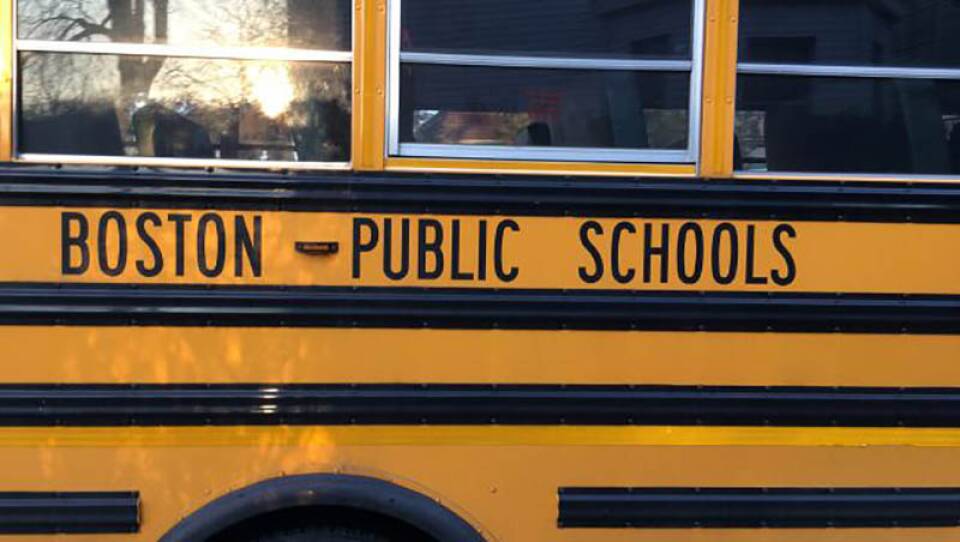New multilingual programs for English-language learners will begin next fall in seven Boston Public Schools, as the district experiences an influx of students speaking languages other than English.
School officials touted the new programming as the biggest single-year increase in multilingual education in the district’s history, and said the change represents a new era in language instruction.
“The development of these programs reflects our commitment to centering students’ identities and leveraging their home languages to accelerate their learning in school,” BPS superintendent Mary Skipper said in a statement. “We are steadfast in our commitment to celebrating students’ native languages while delivering on our promise of a high-quality education for every BPS student.”
But some say the city could be doing more to help students learning English.
Rosann Tung, who resigned in protest from a BPS task force on English learning in the schools last year, continues to have concerns that the district is keeping the majority of multilingual learners in English-only classrooms.
“[About] 90% of our students who are learning English are being pushed into English-only environments,” Tung said.
BPS didn’t directly address that number, but said in a statement, “We provide support to all our English Learners, including daily, direct English instruction support, regardless of what classroom a student is assigned.”
The new programs, which the district announced last week, will take place at five elementary schools and two secondary schools across the city and begin in the 2025-26 school year.. Four of the programs are for pre-kindergarten and kindergarten students at Quincy Elementary in Chinatown, the Blackstone school in the South End, the McKay school in East Boston and the Philbrick/Sumner school in Roslindale. Three “newcomer” language programs for middle and high school students will be available at the Ohrenberger school in West Roxbury, English High School in Jamaica Plain and TechBoston Academy in Dorchester.
Joelle Gamere, chief of the office of multicultural and multilingual education at BPS, said there’s been an influx of multilingual learners to BPS across the city, so the new programming is spread out across schools in different parts of the city.
“So before, if a student didn’t live in a specific area, they wouldn’t be able to participate in a dual-language [program,]” Gamere said. “Part of that expansion is really having more options for families throughout.”
The plan is to have more than 200 students have access to the programs in the first year and expand the programs by 30% in subsequent years.
Gamere said many of the programs were written in collaboration with school communities and leaders.
“I think we’ll continue to look at our enrollment patterns and determine whether we need additional programs in different areas,” she said.
Still, some people are hoping for more.
Tung said adding bilingual programs is great, but she described the expansion as modest in a school system that serves more than 40,000 students.
The bilingual education program at the Quincy will be taught primarily in English with only math taught in Mandarin, with a Mandarin language course also a part of the curriculum. A “newcomer” program for students who recently arrived to the United States will have instruction primarily in English with teachers using “specific techniques” to make material in math, science and social studies accessible to beginners.
Two of the pre-kindergarten programs are “dual language,” which means students learn content in both English and Spanish.
Tung said that students in “dual language” programs typically outperform their peers who are learning English in general education classes.
“So while the expansion of dual language in two elementary schools is great, I would hope that the district stops the main thrust of what they’re doing, which is moving kids into less supportive [general education] environments,” she said.
Roger Rice, an attorney with Multicultural Education, Training and Advocacy Inc., a group that sued BPS in the '90s over how it handled English learners, said a 2002 state referendum cut down on bilingual education in the state. Then, in 2017, former Governor Charlie Baker signed the LOOK Act giving school districts more flexibility to choose how they instruct English learners,
Rice described BPS’s follow through since then as “limp.”
In 2022, the district had presented plans to add 25 bilingual programs by the end of the current school year. The district said that plan was revised in 2023 to reflect it’s commitment to providing more native language access and instruction for multilingual students.
“That would be dramatic, that would be very interesting. And, presumably, they would have learned how to do it,” Rice said referencing the original plan. “But that’s what hasn’t happened.”
GBH Education Editor Meg Woolhouse contributed to this story.





